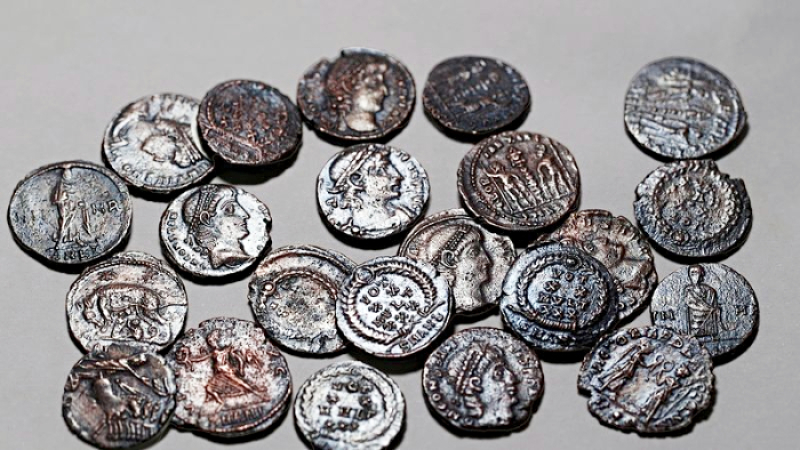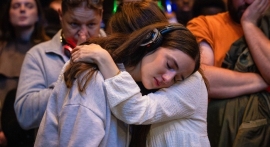
Archaeologists from the Israel Antiquities Authority (IAA) and Zefat Academic College have discovered a hoard of 22 bronze coins in Hukok, an ancient settlement in the Lower Galilee, believed to be over 1,600 years old.
According to All Israel News, the cache was found hidden in a small crevice within an intricate underground hiding complex, originally created during the Great Revolt (66–70 CE) and later modified for use during the Bar-Kochba Revolt (132–136 CE).
These coins originate from the Gallus Revolt of 351–352 CE, marking the last Jewish rebellion against Roman rule.
Archaeologist Uri Berger of the IAA and professor Yinon Shivtiel of Zefat Academic College remarked, “It seems that the people stashing this hoard carefully planned its hiding place, hoping to return to it when the threatening troubles were over. The coins were discovered in a pit, deliberately dug at the end of a narrow winding tunnel.”
The discovery includes coins featuring Roman emperors Constantius II and Constans I, rulers in the mid-fourth century CE.
Berger and Shivtiel note that this rare find confirms the reuse of Hukok's tunnels, initially constructed centuries earlier, during later crises. The tunnel complex at Hukok is among the most sophisticated in Galilee, featuring narrow passageways, chambers, and escape routes.
Despite the tragic outcome of the Gallus Revolt, Hukok later prospered, highlighted by the construction of an impressive synagogue with mosaics, showcasing resilience after centuries of upheaval.
Dr. Einat Ambar-Armon, director of the IAA’s Community Archaeological Educational Center in the Northern Region, stated, “Fortunately, it was the many volunteers excavating the hiding complex who actually uncovered this important treasure, and they enjoyed this great moment of joy and excitement of discovery. The excavation thus became not only an important scientific event but also a significant communal educational experience — one that brings the public closer to its heritage and strengthens the sense of belonging and the connection to the past.”
This week, the discovery will be officially presented at the “Between Josephus and Eusebius” conference at Kinneret Academic College, with a first scientific publication to follow in the journal Israel Numismatic Research from the Israel Numismatic Society.
IAA Director Eli Escusido said, “The Israel Antiquities Authority considers the Hukok site, considering all its discoveries, as a flagship project, which will be a magnet for tourists from Israel and the world.”
The Keren Kayemet LeYisrael–Jewish National Fund (KKL-JNF), a partner in the project, is currently developing plans to make Hukok accessible to the public.



















